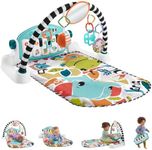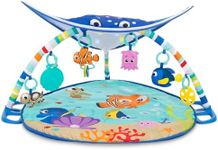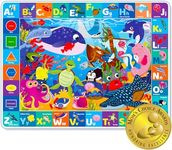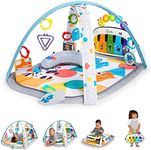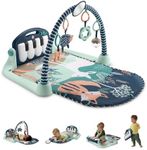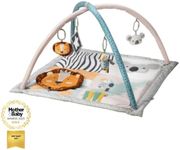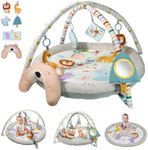Buying Guide for the Best Baby Play Mats
Choosing the right baby play mat is essential for your child's development and safety. A play mat provides a safe and comfortable space for your baby to play, explore, and develop motor skills. When selecting a play mat, consider factors such as safety, comfort, ease of cleaning, and developmental benefits. It's important to choose a mat that suits your living space and meets your baby's needs as they grow.MaterialThe material of a baby play mat is crucial for safety and comfort. Common materials include foam, fabric, and rubber. Foam mats are soft and provide good cushioning, making them ideal for infants who are just starting to roll and crawl. Fabric mats are often more portable and can be easily washed, which is great for parents on the go. Rubber mats are durable and provide excellent grip, preventing slips. When choosing a material, consider any allergies your baby might have and how easy it is to clean the mat.
SizeThe size of the play mat should be appropriate for the space you have available and the activities your baby will engage in. Smaller mats are suitable for limited spaces and can be easily moved around, while larger mats provide more room for your baby to explore and play. If you have a dedicated play area, a larger mat might be more beneficial. Consider how much space you can allocate for the mat and whether you need it to be portable.
ThicknessThickness is important for cushioning and comfort. Thicker mats provide better protection against hard floors, which is especially important for babies who are learning to sit, crawl, or walk. Thin mats are more portable and easier to store but may not offer as much protection. If your baby is very active or if you have hard flooring, a thicker mat might be more suitable. Consider your baby's activity level and the type of flooring in your home when choosing the thickness.
Design and FeaturesPlay mats come in various designs and may include features like interactive elements, educational prints, or textured surfaces. These can stimulate your baby's senses and aid in their development. Simple designs with high-contrast colors are great for newborns, while older babies might enjoy mats with interactive features like mirrors or crinkle textures. Think about your baby's age and developmental stage when selecting a design, as well as how the mat will fit with your home decor.
SafetySafety is paramount when choosing a play mat. Ensure the mat is free from harmful chemicals like phthalates and BPA, and check for any small parts that could pose a choking hazard. Look for mats that have been tested for safety standards. Non-slip backing is also important to prevent the mat from sliding around. Always prioritize your baby's safety by choosing a mat that meets safety regulations and is made from non-toxic materials.
Ease of CleaningBabies can be messy, so a play mat that is easy to clean is a practical choice. Some mats are machine washable, while others can be wiped clean with a damp cloth. Consider how often you will need to clean the mat and how easy it is to maintain. If your baby is prone to spills or if you plan to use the mat for feeding as well as play, a mat that is easy to clean will save you time and effort.

